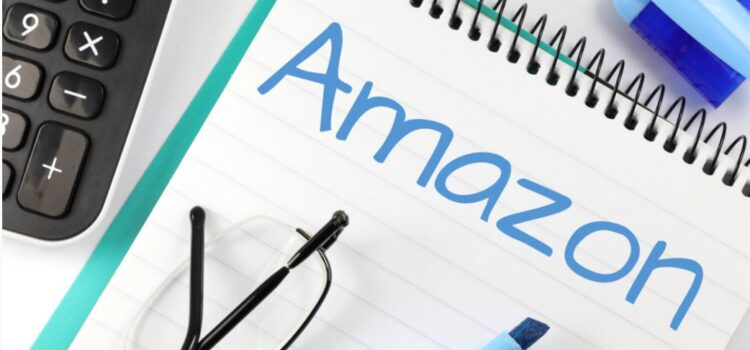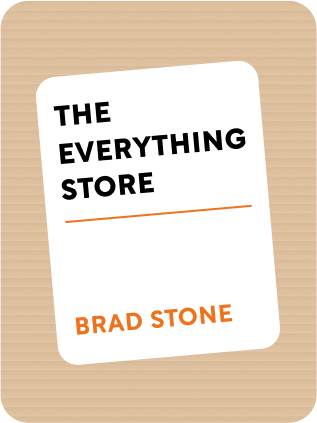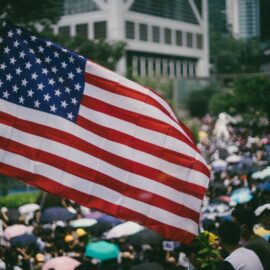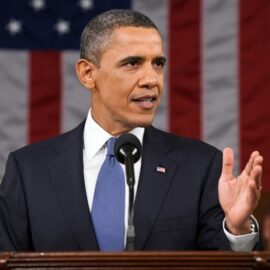

This article is an excerpt from the Shortform book guide to "The Everything Store" by Brad Stone. Shortform has the world's best summaries and analyses of books you should be reading.
Like this article? Sign up for a free trial here .
Why was Amazon successful? How did other companies influence Amazon’s growth in the early 2000s? How did “super saver shipping” affect Amazon’s profitability?
Although 1999-2001 was a turbulent time in Amazon’s history, the years following held nothing but promise for Amazon’s future. Amazon rolled out its super saver shipping program which boosted their stock prices, integrated more automation, and lowered shipping costs.
Continue reading to learn why Amazon was so successful in the early 2000s.
Amazon Regains Footing
Why was Amazon so successful? This timeline can help explain.
March 2001: Amazon considers whether distribution is a commodity or a core competency.
- If the former, then it could outsource distribution to a third party. If the latter, it could develop a key competitive advantage, and eventually build a platform to dropship items from manufacturers and distributors.
- They visit a Reno fulfillment center, where they realize their shipping happens in large batches. Workers retrieve items ordered by customers, dump their items to a sorting machine, which rearranges products into customer orders. These pickers work in waves, with the entire shift dumping their orders. The problem is that a slow worker could hold up the entire team.
- Over the following years, Amazon moves away from wave-based picking, allowing individual workers to be controlled by algorithms and shipping orders in small batches. This allows Amazon to make accurate promises on when purchases will arrive.
Costco’s Influence on Amazon
Spring 2001: Bezos meets Costco founder Jim Sinegal, who changes Bezos’s mind on pricing.
- The Costco model is all about customer loyalty. It doesn’t advertise and earns most gross profit from annual membership fees. “The membership fee is a one-time pain, but it’s reinforced every time customers walk in and see forty-seven-inch televisions that are two hundred dollars less than anyplace else. Customers know they will find really cheap stuff at Costco.”
- Costco then uses its heavy sales volume to negotiate better deals from suppliers. It marks up everything at a standard 14%, not taking excess profits.
- Learning this makes Bezos articulate a clearer strategy: “everyday low prices” aiming to be lower than competitors at all times. If Amazon could stay competitive on price, it could win on unlimited selection and convenience.
- In July 2001, Amazon announces it’s cutting prices of books, music, and videos by 20-30%. Bezos on conference call: “There are two kinds of retailers: those who work to figure how to charge more, and those who work to figure how to charge less, and we’re going to be the second, full stop.”
Later 2001: Amazon senior management has a breakthrough in understanding their business strategy. Jim Collins (author of Good to Great) meets with the exec team offsite and prompts them to consider their flywheel effect:
- Lower prices leads to more customer visits
- More customers increase the volume of sales and attract more third-party sellers
- More third-party sellers increases diversity which increases customers
- More sales means higher return on fixed costs like fulfillment centers and servers
- Higher return means further lower prices
- This makes executives feel like “they finally understand their own business.”
Amazon’s “Super Saver Shipping”
January 2002: Amazon announces Free Super Saver Shipping, for orders above $99.
- This is prompted by free shipping promotions during the 2000 and 2001 holidays, and by surveys showing shipping costs were a major hurdle to ordering online.
- They consider how free shipping can segment customers who are willing to wait a few more days for their order, much like how airlines segment businesspeople from recreational travelers by reducing prices for those willing to stay at destination through Saturday night.
- The slower expectation of shipping lets them pack boxes into spare room in trucks when it happens to be available, reducing expenses.
- Amazon notices that Super Saver makes people order more than they would otherwise.
- They quickly lower the minimum price for Super Saver shipping from $99 to $49, then $25.
January 2002: Amazon reports its first profitable quarter, with net income of $5 million. The stock jumps 25%.
Transition to P13N: Automation vs. Humans
2002-03: As an employer, Amazon has high levels of attrition. Few believe Amazon will become a $600 billion company. Many are tired of Bezos’s insistence on work ethic.
- The editorial team is made obsolete by the automated personalization team (team name: P13N, for PersonalizatioN’s 13 letters).
- The personalization team (P13N) battled the human curation team for product recommendations. They have on their wall: “People forget that John Henry died in the end,” an allusion to the fable of the person who won the contest against a steam-powered machine but died in the end.
- The engineering team has to deal with an aging infrastructure, moving to a service-oriented architecture (Shortform note: see former engineer Steve Yegge’s famous post about platforms).
Amazon and Google
This is a good point to talk about the general situation of Amazon relative to the tech world. The points below extend back and forward a few years.
- Google’s rise signals a shift toward favoring tech companies, not clever business models and experienced CEOs.
- Google IPOs in August 2004. At this time, the market cap of Amazon is around $18 billion; Google is $35 billion; eBay is $47 billion.
- Despite Bezos’s claims that Amazon is a tech company, it looks merely like an old-fashioned retailer, with no profits.
- Google threatens to disintermediate Amazon – customers might start their shopping trips on Google, not on Amazon. Google is very competent at indexing the Web, and users might search Amazon better through Google than through Amazon itself.
- Also, Google creates a comparative shopping engine, Froogle. And Amazon and eBay now compete for Google search ads, effectively paying a tax to Google.
- Google also competes with Amazon for talent, offering lavish perks and stock options. In comparison, Amazon is still frugal, has a combative culture, and anemic stock growth. Bezos loses two lieutenants:
- Jeff Holden, SVP of worldwide discovery, runs a secret search engine effort competing against A9. Bezos chooses A9, and Holden leaves, feeling betrayed. (Shortform note: as of this writing, Holden is now CPO at Uber.)
- Then Head of A9 Udi Manber leaves for Google in early 2006, getting a very generous offer and joining a world-class team on the world’s largest search problem. Bezos is very upset.
- In this environment, Bezos continues to push for taking risks outside of Amazon’s core business. “There’s only one way out of this predicament, and that is to invent our way out.”
Amazon and UPS
2002: Amazon’s contract with UPS is up for renewal. Amazon has low negotiating leverage – it does little business with competitor Fedex, and the USPS can’t negotiate rates.
- Over 6 months, Amazon integrates with FedEx and increases the volume of packages. It also increases shipment injections with USPS.
- When Wilke threatens to walk from a UPS negotiation, UPS calls his bluff. Wilke makes a call to “turn them off.” Amazon gives UPS zero packages to ship for 72 hours.
- UPS partially calls the bluff, saying they know FedEx is overwhelmed and Amazon can’t keep it up. But they cave and settle on discounted rates.

———End of Preview———
Like what you just read? Read the rest of the world's best book summary and analysis of Brad Stone's "The Everything Store" at Shortform .
Here's what you'll find in our full The Everything Store summary :
- How Amazon went from an online bookstore to the largest internet retailer in the world
- What Jeff Bezos did to compete with companies like eBay, Zappos, and Diapers.com
- What it was like to work for Jeff Bezos







This story about how Amazon got started was so interesting I couldn’t stop reading! And that’s rare! Thanks
Louise